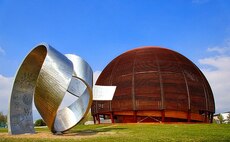Beam energy to hit four teraelectron volts as organisation hopes for discovery in 2012
CERN's has announced it will increase the power of the Large Hadron Collider (LHC) to four teraelectron volts (TeV) this year, a 0.5 TeV bump from 2010 and 2011, in an attempt to find the elusive H...
To continue reading this article...
Join Computing
- Unlimited access to real-time news, analysis and opinion from the technology industry
- Receive important and breaking news in our daily newsletter
- Be the first to hear about our events and awards programmes
- Join live member only interviews with IT leaders at the ‘IT Lounge’; your chance to ask your burning tech questions and have them answered
- Access to the Computing Delta hub providing market intelligence and research
- Receive our members-only newsletter with exclusive opinion pieces from senior IT Leaders




















